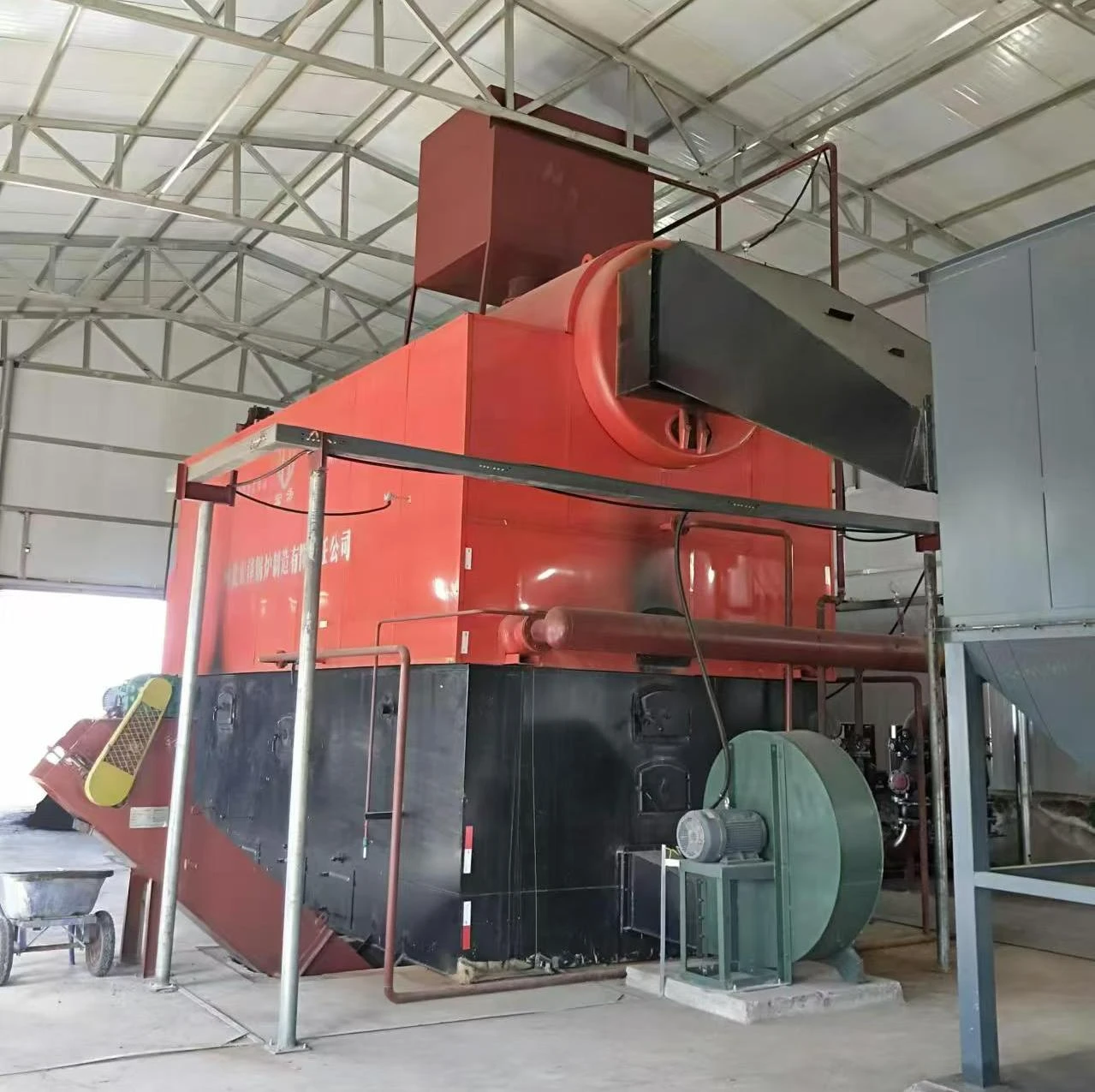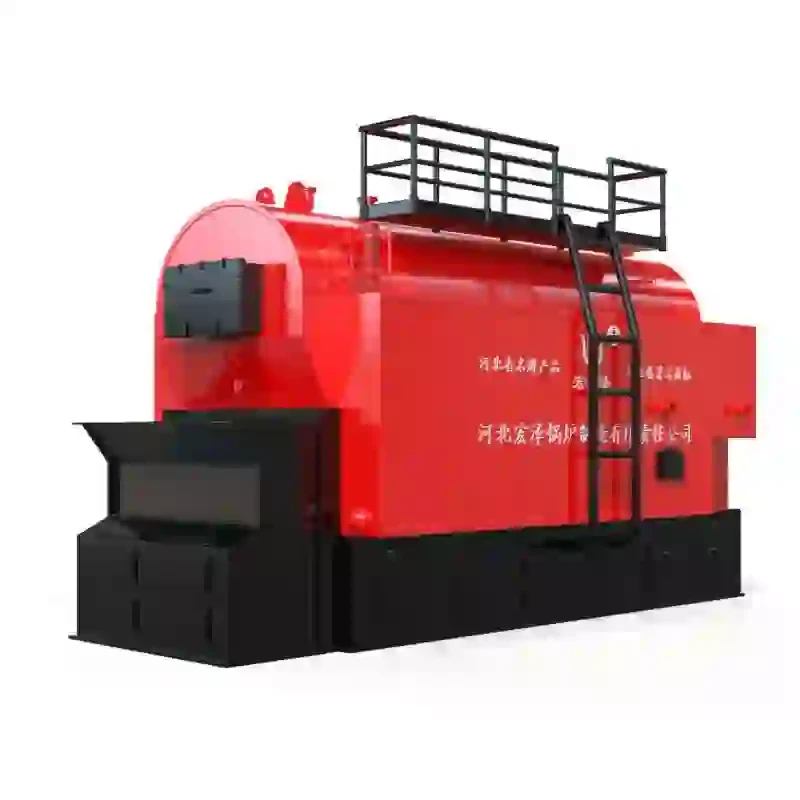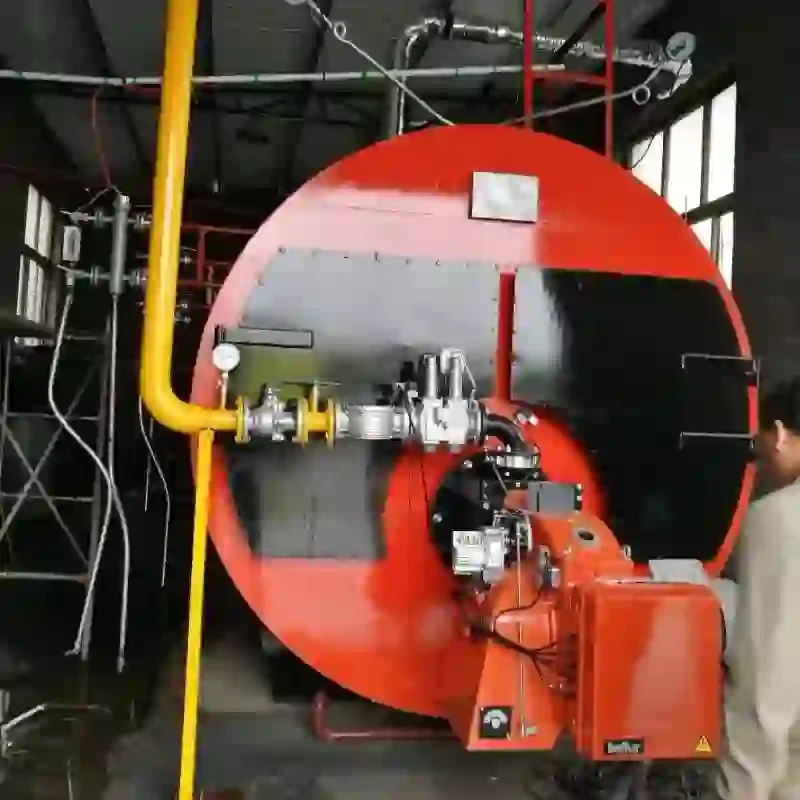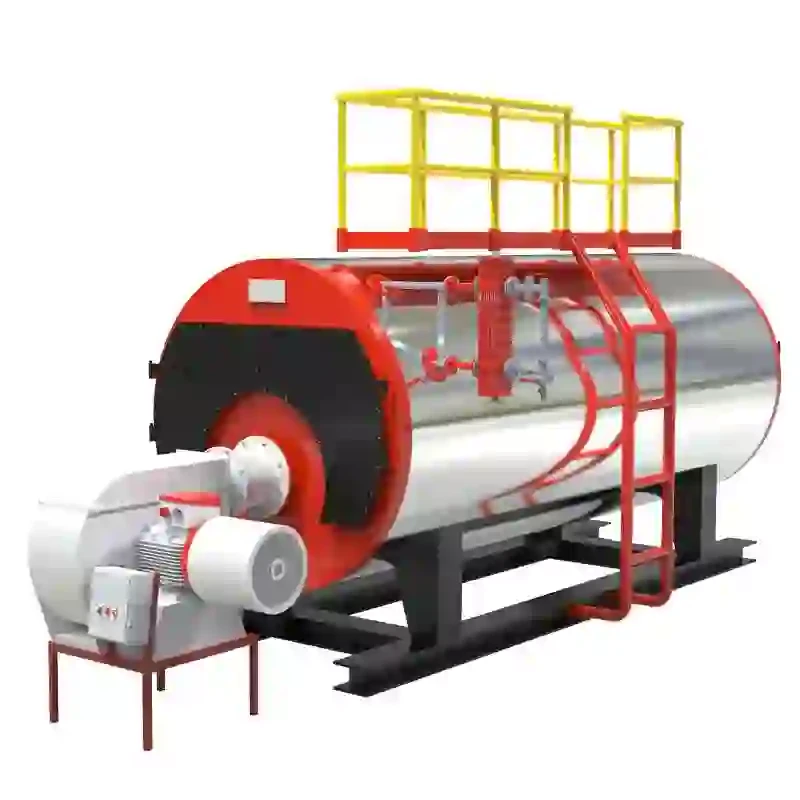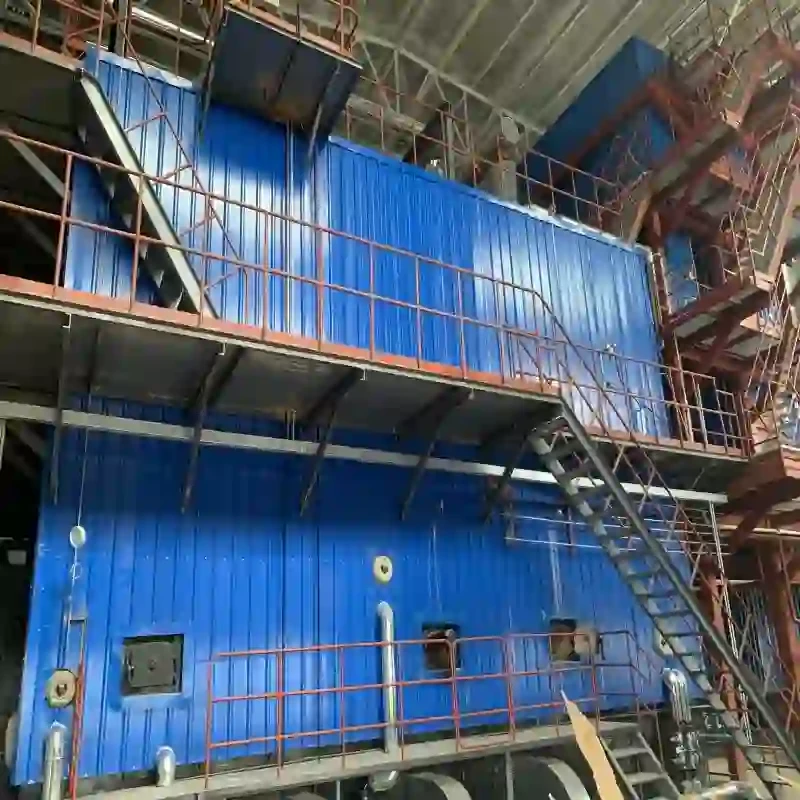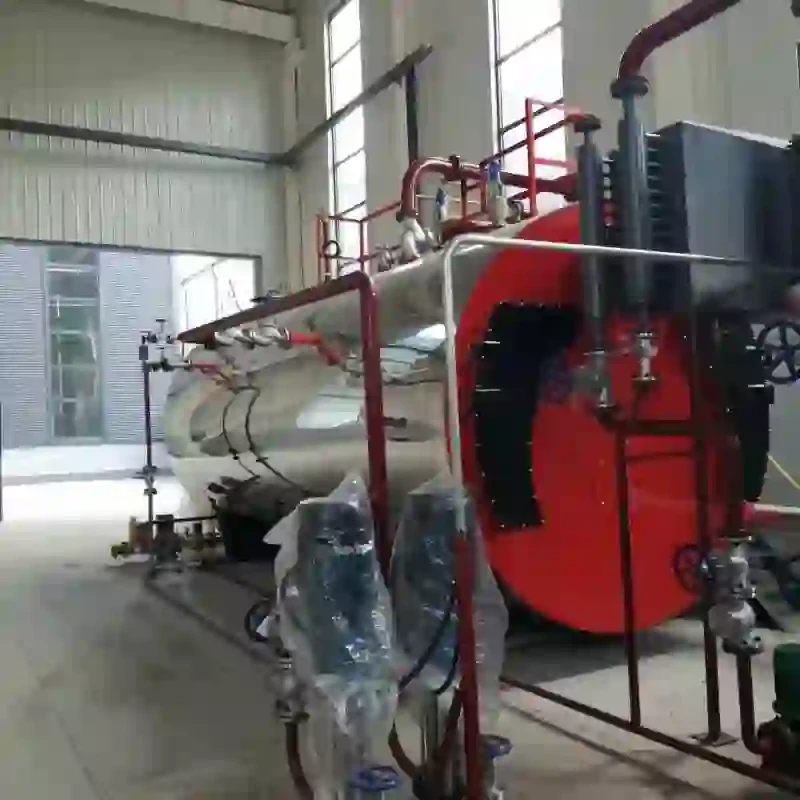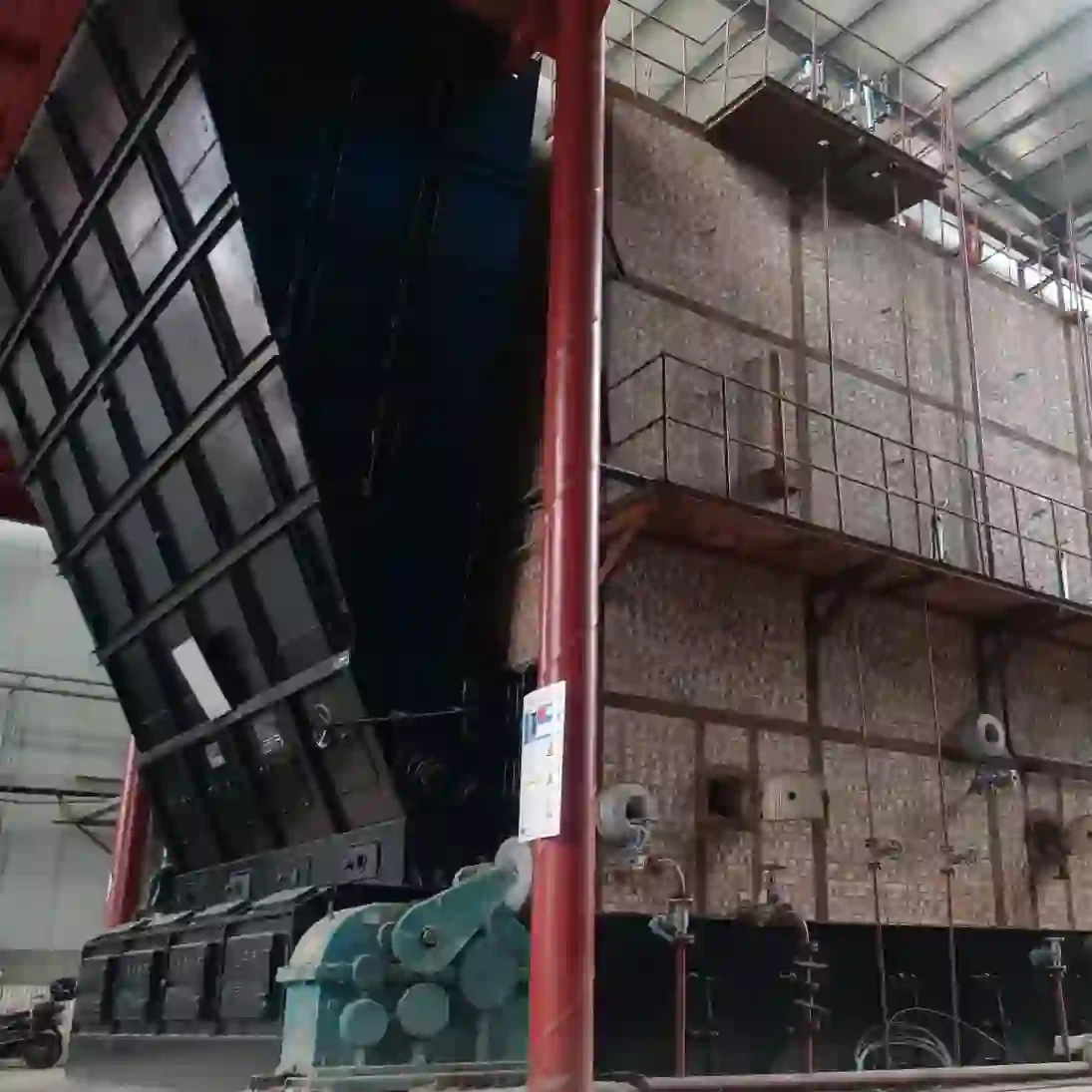
Sep . 15, 2025 09:00 Back to list
High-Efficiency Commercial Oil Fired Steam Boiler | Industrial Use
The Indispensable Role of Commercial Oil Fired Steam Boilers in Modern Industry
In the vast landscape of industrial thermal energy solutions, the commercial oil fired steam boiler stands as a testament to robust engineering and reliable performance. These sophisticated systems are critical for a multitude of B2B operations, supplying essential steam for processes ranging from heavy manufacturing and petrochemical refining to food processing and district heating. Engineered for efficiency and durability, they offer a consistent and controlled energy output vital for maintaining operational continuity and product quality across diverse sectors.
The ongoing evolution in boiler technology, driven by stringent environmental regulations and the global push for enhanced energy efficiency, necessitates a deep understanding of modern oil-fired units. This article provides an in-depth exploration of their technical characteristics, manufacturing precision, strategic applications, and the factors influencing their selection and long-term value.
Current Industry Trends and Market Dynamics for Oil Fired Steam Boilers
The market for industrial steam boilers, including the segment dedicated to the commercial oil fired steam boiler, is characterized by several dynamic trends. A paramount driver is the imperative for increased energy efficiency. Manufacturers are continuously integrating advanced heat recovery systems, such as economizers and air preheaters, to maximize thermal transfer and reduce fuel consumption, directly impacting the overall operational costs and oil fired steam boiler prices.
Environmental compliance is another significant trend. Stricter emissions standards, particularly concerning NOx, SOx, and particulate matter, are pushing the adoption of low-NOx burners, flue gas recirculation (FGR) systems, and other advanced combustion technologies. The ability of a modern oil fired steam boiler to meet these evolving regulations without compromising performance is a key differentiator. Furthermore, the advent of Industry 4.0 has led to increased demand for smart boilers equipped with PLC-based controls, remote monitoring, predictive maintenance capabilities, and seamless integration with plant-wide SCADA systems, offering enhanced operational visibility and control.
The global landscape of fuel pricing also influences market dynamics. In regions where natural gas infrastructure is limited or unstable, or where fuel oil remains a more cost-effective option, the demand for reliable furnace oil fired steam boiler systems continues to be robust. Manufacturers are responding by offering increasingly versatile boiler designs capable of handling various grades of fuel oil efficiently.
Detailed Technical Specifications and Core Parameters
The robust performance of a commercial oil fired steam boiler stems from its carefully engineered components and adherence to stringent technical parameters. Expertise in thermal engineering, material science, and control systems is critical in their design.
Representative Product Specifications: Oil (Gas) Steam Boiler Series
| Parameter | Specification Range / Detail |
|---|---|
| Rated Evaporation Capacity | 1 T/h to 35 T/h (Modular units for higher capacities) |
| Rated Steam Pressure | 0.7 MPa to 2.5 MPa (7 bar to 25 bar) |
| Rated Steam Temperature | 170 °C to 225 °C (Saturated Steam) |
| Design Fuel Compatibility | Light Diesel Oil, Heavy Fuel Oil (HFO / Furnace Oil), Kerosene, Natural Gas, LPG, Biogas |
| Thermal Efficiency (Net) | ≥ 90% (Oil Fired), ≥ 92% (Gas Fired) with Economizer |
| NOx Emissions (Dry Basis) | < 80 mg/Nm³ (@ 3% O²) with Low NOx Burners; Ultra-low NOx options available |
| Control System | Full Automatic PLC with Touch Screen HMI, Remote Monitoring via Modbus/Ethernet |
| Design Service Life | 20-25 years for pressure parts (with proper water treatment & maintenance) |
| Safety Protections | Over-pressure, Low water level, High steam pressure, Flame failure, Burner ignition failure |
These specifications highlight the advanced engineering behind modern steam generation. The ability of a furnace oil fired steam boiler to maintain high efficiency and low emissions across its operational range is a testament to its design and material quality.
The Meticulous Manufacturing Process of Commercial Oil Fired Steam Boilers
The fabrication of a commercial oil fired steam boiler is a complex, multi-stage process governed by precision engineering, adherence to international standards, and rigorous quality control. This systematic approach ensures the boiler’s integrity, operational safety, and extended service life.
- 1. Material Selection and Preparation: Only certified boiler-grade steel (e.g., SA-285 Gr.C, SA-516 Gr.70, Q245R, Q345R) is utilized for pressure parts. All raw materials undergo comprehensive chemical analysis, mechanical property testing, and ultrasonic flaw detection to ensure superior quality and compliance with standards such as ASTM/ASME, EN, or GB. Plates are cut to precise dimensions using advanced CNC plasma or laser cutting machines.
- 2. Forming and Machining: Steel plates are precisely rolled and pressed into cylindrical shells and dished ends. Tube sheets are drilled with high accuracy using CNC machining centers to ensure perfect alignment for tube insertion. Forging may be employed for critical components like nozzles and flanges to enhance strength and durability.
- 3. Welding and Assembly: Boiler shells, furnace tubes, and smoke tubes are assembled. Welding of critical pressure-bearing components is performed by certified welders using advanced techniques such as Submerged Arc Welding (SAW) for longitudinal seams and Gas Metal Arc Welding (GMAW) for circumferential seams. Automatic welding ensures consistent quality and penetration.
- 4. Non-Destructive Testing (NDT): After welding, critical welds undergo thorough NDT, including X-ray radiography, ultrasonic testing, magnetic particle inspection, and penetrant testing, to detect any internal or surface flaws. This is performed in accordance with standards like ASME Section V or EN ISO 17635.
- 5. Heat Treatment: Post-weld heat treatment (PWHT) is applied to thick-walled pressure parts to relieve residual stresses induced during welding, enhancing material toughness and preventing brittle fracture or stress corrosion cracking.
- 6. Hydrostatic Pressure Testing: The completed pressure vessel undergoes hydrostatic testing, pressurized to 1.25 to 1.5 times the design pressure, to verify its structural integrity and leak-tightness. This crucial step is conducted under the supervision of authorized inspectors and confirms compliance with safety regulations like ASME Section I.
- 7. Insulation and Cladding: High-efficiency thermal insulation (e.g., mineral wool, ceramic fiber) is meticulously applied to minimize heat loss, covered by a protective and aesthetically pleasing outer cladding, typically of painted carbon steel or stainless steel.
- 8. Component Integration and Controls: The burner, control panel, valves, pumps, safety devices, and all necessary instrumentation are integrated and calibrated. The PLC-based control system is programmed and tested for full automatic operation and safety interlocks.
- 9. Final Inspection and Certification: A comprehensive final inspection is performed, encompassing all aspects of construction, functionality, and documentation. The boiler is then prepared for shipment with all required certifications and compliance documents (e.g., CE, ASME stamp, ISO 9001).
This rigorous process underscores the advanced manufacturing capabilities that deliver high-quality steam boilers known for their energy efficiency and exceptional corrosion resistance.

Figure 1: Internal structure of a multi-pass commercial oil fired steam boiler, emphasizing heating surfaces and weld integrity.
Versatile Application Scenarios and Target Industries
The adaptability and reliability of the commercial oil fired steam boiler make it an indispensable asset across a diverse range of industries that depend on a stable and efficient steam supply. Its flexibility with various grades of fuel oil, including heavy furnace oil, provides strategic energy independence where natural gas supply may be volatile or unavailable.
- Petrochemical and Chemical Industry: Steam is paramount for reaction heating, distillation, stripping, pipeline tracing to prevent solidification, and driving turbines for power generation. The robust design of the oil fired steam boiler ensures safe and continuous operation in these demanding environments.
- Food & Beverage Processing: Essential for cooking, pasteurization, sterilization of equipment, bottle washing, and maintaining specific temperatures for fermentation. Clean steam is critical for hygiene and product safety.
- Textile and Dyeing Industry: Provides steam for dyeing vats, fabric finishing processes, pressing, and drying, where precise temperature and pressure control directly affect product quality.
- Pharmaceuticals and Healthcare: Used for sterilizing medical equipment, humidification in clean rooms, and process heating for drug manufacturing. High-purity, sterile steam is a non-negotiable requirement.
- Paper and Pulp Industry: Drives drying cylinders, aids in the chemical digestion of wood chips, and is integral to various recovery processes.
- Building Heating & HVAC: Large commercial complexes, institutional facilities, and district heating networks rely on these boilers for central heating, providing comfort and hot water services.
- Metallurgy and Metal Processing: High-temperature steam is used in various heat treatment processes, forging, and surface preparation, contributing to material properties and finishing.
In these diverse applications, the advantages are clear: consistent, on-demand steam supply, excellent load following capabilities, and the ability to operate efficiently even with fluctuating fuel prices or availability, particularly for a furnace oil fired steam boiler. Feedback from our clientele consistently highlights enhanced operational efficiency and reliability in their facilities.
Key Technical Advantages: Driving Efficiency and Longevity
Modern commercial oil fired steam boiler units are designed to deliver a spectrum of technical advantages that directly translate into economic and operational benefits for industrial users.
- Superior Thermal Efficiency: Engineered with advanced three-pass wet-back or dry-back designs and optimized heat transfer surfaces, these boilers achieve thermal efficiencies exceeding 90%. Integration of economizers and air preheaters further recovers waste heat, significantly reducing fuel consumption and lowering long-term operating costs.
- Low Emission Profile: Equipped with cutting-edge low-NOx burners (e.g., rotary cup, pressure jet, steam/air atomizing), often combined with flue gas recirculation (FGR), these boilers can dramatically reduce nitrogen oxide emissions, ensuring compliance with strict global environmental standards.
- Robust Construction and Corrosion Resistance: Utilizing high-grade, certified boiler steel and employing advanced welding techniques ensure the structural integrity and longevity of the pressure vessel. Internal design features and recommended water treatment protocols actively resist corrosion and scaling, which are critical for maintaining boiler health and extending its operational life.
- Advanced Automatic Control Systems: PLC-based control panels with user-friendly HMI (Human-Machine Interface) provide fully automatic and safe operation, including modulated firing, precise water level control, and steam pressure regulation. These systems minimize manual intervention, optimize performance, and offer remote diagnostic capabilities.
- Rapid Response to Load Changes: Optimized internal circulation and burner control systems enable quick startup times and rapid adjustment to fluctuating steam demands, critical for processes with variable load requirements.
- Enhanced Safety Features: Compliance with international safety codes (e.g., ASME, EN) is ensured through multiple layers of safety interlocks, including automatic shutdown for high/low water levels, over-pressure, flame failure, and exhaust gas over-temperature, protecting personnel and assets.

Figure 2: Advanced control panel of a modern commercial oil fired steam boiler, demonstrating automation capabilities.
Vendor Comparison and Strategic Selection Criteria
Selecting the appropriate commercial oil fired steam boiler manufacturer is a pivotal decision impacting not only initial investment but also long-term operational viability and return on investment. A meticulous evaluation process is essential.
- Adherence to Global Standards and Certifications: Verify that the manufacturer holds certifications such as ISO 9001:2015 for quality management, and that their boilers comply with international codes like ASME Boiler and Pressure Vessel Code, European PED, CE marking, or other relevant local standards. This assures authoritative quality and safety.
- Track Record and Industry Experience: A manufacturer's years of service and reputation in supplying oil fired steam boiler systems to your specific industry are crucial indicators of reliability and expertise. Reviewing past projects and client testimonials offers valuable insight.
- Technological Innovation: Assess the manufacturer's investment in R&D, particularly concerning energy efficiency enhancements, emission reduction technologies, and smart automation features. Leading manufacturers offer demonstrable advantages in these areas.
- Comprehensive After-Sales Support: The availability of readily accessible technical support, rapid spare parts supply, qualified field service engineers for commissioning and maintenance, and remote diagnostic capabilities are paramount for minimizing downtime.
- Customization Capabilities: The ability to engineer bespoke solutions for unique site constraints, specific process requirements (e.g., unusual steam parameters), or diverse fuel flexibility (e.g., dual-fuel for oil and gas) is a significant advantage.
- Total Cost of Ownership (TCO) Analysis: Beyond the initial oil fired steam boiler prices, a thorough evaluation includes projected fuel consumption, maintenance costs, expected lifespan, and potential energy savings over the boiler's operational life.
Engaging with vendors who offer transparent data, comprehensive engineering support, and a robust service infrastructure will yield the most reliable and cost-effective thermal energy solution.
Customized Solutions and Engineering Flexibility
While standard industrial boiler models offer broad utility, many operations have unique requirements that necessitate customized engineering. Leading commercial oil fired steam boiler manufacturers excel in providing flexible design and fabrication services to meet these precise client specifications, ensuring optimal integration and performance.
- Tailored Capacity and Pressure: Beyond typical ranges, boilers can be custom-designed for higher steam capacities (e.g., 50 T/h for large power applications) or elevated pressure ratings (e.g., 3.5 MPa for specialized chemical processes) to match exact process demands.
- Multi-Fuel Capability: Offering burners capable of firing multiple fuel types—such as heavy oil, light oil, and natural gas—allows operators to switch based on fuel availability or pricing, providing significant operational flexibility for an oil fired steam boiler.
- Space Optimization: Custom dimensions, vertical configurations, or compact designs can be engineered to fit within constrained boiler room footprints or specific industrial layouts.
- Advanced Control Integration: Seamless integration with existing plant Distributed Control Systems (DCS) or specific SCADA platforms to provide centralized monitoring and control, streamlining operational management.
- Special Materials for Corrosive Environments: For highly corrosive applications, specific alloys or internal coatings can be employed to enhance the boiler's lifespan and resistance to aggressive media, especially crucial for certain furnace oil fired steam boiler installations.
- Integrated Skid-Mounted Solutions: Custom packages including deaerators, water treatment systems, condensate return systems, and blowdown tanks can be supplied as pre-assembled, skid-mounted units for reduced on-site installation time and complexity.
Such engineering flexibility ensures that the thermal energy system is not just a component, but a perfectly integrated solution that enhances the entire operational workflow, delivering maximum efficiency and mitigating unforeseen challenges.
Application Case Studies: Real-World Impact and Proven Performance
The tangible benefits of a well-designed and efficiently operated commercial oil fired steam boiler are best illustrated through real-world applications. These examples demonstrate improved efficiency, reduced emissions, and enhanced operational reliability.
- Case Study 1: Major Pharmaceutical Manufacturer: A pharmaceutical facility in Southeast Asia, requiring stable, high-purity steam for sterilization and process heating, upgraded to a 10 T/h oil fired steam boiler. The new unit, equipped with a low-NOx burner and an integrated economizer, achieved a consistent 92% thermal efficiency. This led to a 15% reduction in fuel consumption compared to their previous system and full compliance with strict local air quality regulations. The PLC-based control system also enabled precise temperature regulation (±0.5 °C) critical for sensitive drug manufacturing processes.
- Case Study 2: International Beverage Production Plant: An existing beverage plant sought to expand its production capacity, requiring additional steam for bottle washing, pasteurization, and hot filling. A 12 T/h furnace oil fired steam boiler with a rapid steam generation capability was installed. Its ability to quickly respond to peak load demands during production cycles, combined with an optimized combustion system for heavy fuel oil, resulted in a 10% increase in plant throughput and a notable reduction in operational downtime, which contributed to favorable oil fired steam boiler prices in the long run.
- Case Study 3: Remote Mining Operation Support: In a challenging remote location, a mining operation required reliable steam for various auxiliary heating purposes and process water treatment. A robust, skid-mounted 5 T/h oil fired steam boiler, designed for extreme environmental conditions and capable of operating on locally sourced heavy fuel oil, was supplied. Its simplified maintenance requirements and durable construction ensured continuous operation even with limited access to specialized services, proving its resilience and adaptability.
These diverse case studies highlight how advanced boiler technology delivers measurable improvements in efficiency, environmental performance, and operational reliability, making a significant impact on our clients' bottom line and sustainability goals.

Figure 3: Installation of a commercial oil fired steam boiler system within a modern industrial complex.
Commitment to Trust: FAQs, Lead Times, Warranty, and Support
Frequently Asked Questions (FAQs)
Q: What is the typical lead time for a new commercial oil fired steam boiler system?
A: Our lead times generally range from 8-16 weeks from the date of order confirmation, depending on the boiler's capacity, level of customization, and current production schedule. We communicate transparently and provide detailed project timelines for every order. Expedited manufacturing and delivery options can be discussed for urgent requirements.
Q: What warranty coverage is provided for your oil fired steam boilers?
A: We offer a comprehensive warranty, typically 18 months from the date of shipment or 12 months from successful commissioning (whichever occurs first), covering the boiler pressure parts against manufacturing defects. Ancillary equipment is generally covered for 12 months. Our warranty terms are clearly stipulated in our contracts, emphasizing that proper installation, operation, and scheduled maintenance are prerequisites.
Q: What kind of after-sales support and services can customers expect?
A: Our commitment extends far beyond delivery. We provide a full suite of after-sales services including on-site supervision for installation, commissioning, comprehensive operator training, preventative maintenance programs, and a readily available supply of genuine spare parts. Our dedicated global service network offers 24/7 technical assistance and emergency support, including remote diagnostics, to ensure minimal operational disruption.
Q: How do your oil fired steam boiler prices compare to other fuel types?
A: The initial capital expenditure for an oil fired steam boiler can be comparable to, or sometimes slightly higher than, gas-fired boilers due to the complexities of fuel handling and burner systems for oil. However, overall operating costs are heavily influenced by the prevailing regional prices of fuel oil versus natural gas, and the boiler's inherent thermal efficiency. We offer detailed total cost of ownership (TCO) analyses to assist clients in making economically sound decisions based on their specific geographical and market conditions.
Lead Time and Fulfillment Process
Our meticulous project management ensures a seamless process from design consultation to final delivery. We leverage robust supply chain logistics and experienced shipping partners to manage international freight, documentation, and customs clearance, providing a hassle-free procurement experience for our global clientele. Regular communication keeps clients informed at every stage of their boiler's journey.
Warranty and Dedicated Customer Support
The longevity and performance of a oil fired steam boiler are significantly enhanced by effective after-sales support. Our commitment to trustworthiness is reflected in our comprehensive warranty packages and a globally responsive support team. From immediate technical troubleshooting to long-term preventative maintenance contracts, we partner with our clients to ensure their thermal assets operate at peak efficiency throughout their entire lifecycle.
Authoritative References and Industry Recognition
Our unwavering commitment to engineering excellence, product reliability, and safety is substantiated by our adherence to leading international industry standards and independent certifications. Our manufacturing facilities and processes are certified under ISO 9001:2015 for Quality Management Systems, ensuring consistent quality from concept to completion. All our pressure vessels and boiler components are designed and fabricated in strict compliance with globally recognized codes, including the ASME Boiler and Pressure Vessel Code (Section I for Power Boilers) and the European Pressure Equipment Directive (PED 2014/68/EU), evidenced by corresponding CE marking.
We collaborate with reputable engineering firms, energy consultants, and independent inspection agencies globally, underscoring our authoritative standing in the industrial boiler sector. Our extensive portfolio of successful installations with multi-national corporations and government entities in the petrochemical, food & beverage, textile, and pharmaceutical industries, reflects decades of trusted service and expertise in delivering high-performance commercial oil fired steam boiler solutions. Furthermore, third-party laboratory test data consistently validates the thermal efficiency, emission reductions, and structural integrity claims of our boiler systems, providing transparent and verifiable performance metrics to our clients.
These credentials and partnerships affirm our position as a leading oil fired steam boiler manufacturer, dedicated to delivering superior quality and reliable thermal energy solutions.
Conclusion
The commercial oil fired steam boiler continues to be a cornerstone technology for industrial thermal energy needs, offering unparalleled reliability, efficiency, and fuel flexibility. Modern advancements in design, combustion technology, and automation ensure that these systems are not only robust workhorses but also environmentally responsible and economically viable solutions. By meticulously considering technical specifications, manufacturing precision, and comprehensive after-sales support, B2B decision-makers and engineering professionals can confidently select a thermal energy partner capable of delivering high-performance, sustainable, and custom-engineered steam generation systems for their diverse operational demands. Investing in a quality oil fired steam boiler is an investment in long-term operational stability and efficiency.
References
- American Society of Mechanical Engineers (ASME). ASME Boiler and Pressure Vessel Code. Section I: Power Boilers.
- European Committee for Standardization (CEN). EN 12953: Shell boilers.
- International Organization for Standardization (ISO). ISO 9001: Quality management systems – Requirements.
- U.S. Environmental Protection Agency (EPA). Air Pollution Control Technology Fact Sheet: Flue Gas Recirculation (FGR) for NOx Control.
- United Nations Industrial Development Organization (UNIDO). Industrial Energy Efficiency Accelerator – Boilers and Thermal Systems.
-
Comprehensive Guide to Steam Boiler Installation Diagram – Global Best Practices and Future Trends
NewsNov.24,2025
-
A Practical Guide to the Selection of Steam Boiler for Industrial Efficiency
NewsNov.23,2025
-
Comprehensive Guide to Steam Boiler PDF Manuals and Their Global Impact
NewsNov.22,2025
-
Discover How Steam Boiler Videos Improve Industrial Training & Safety
NewsNov.22,2025
-
Comprehensive Guide to Wood Fired Steam Boiler Design – Efficiency, Applications, and Innovations
NewsNov.21,2025
-
Comprehensive Guide to Steam Boiler Working – Efficiency & Applications
NewsNov.20,2025
Related PRODUCTS






